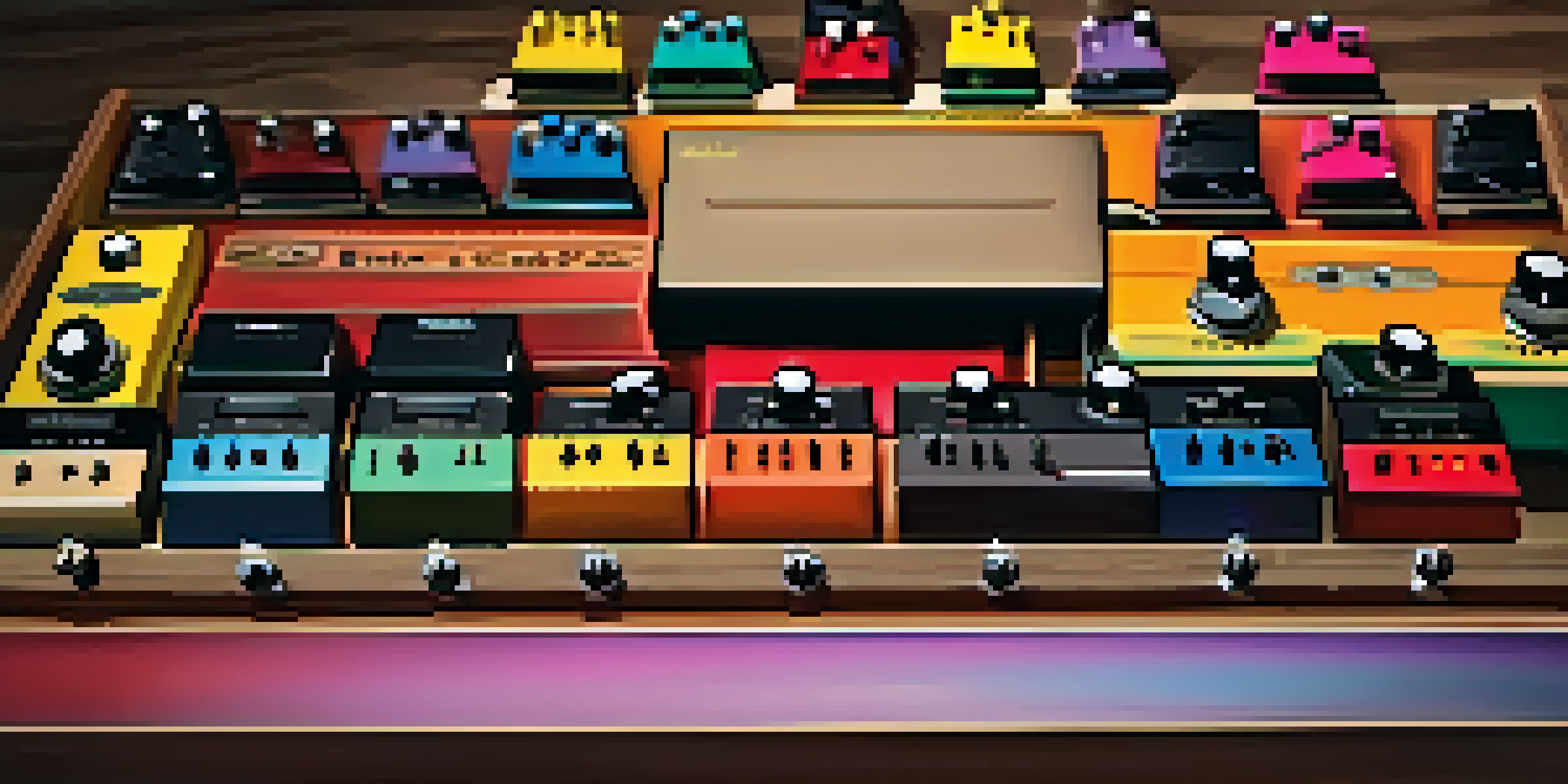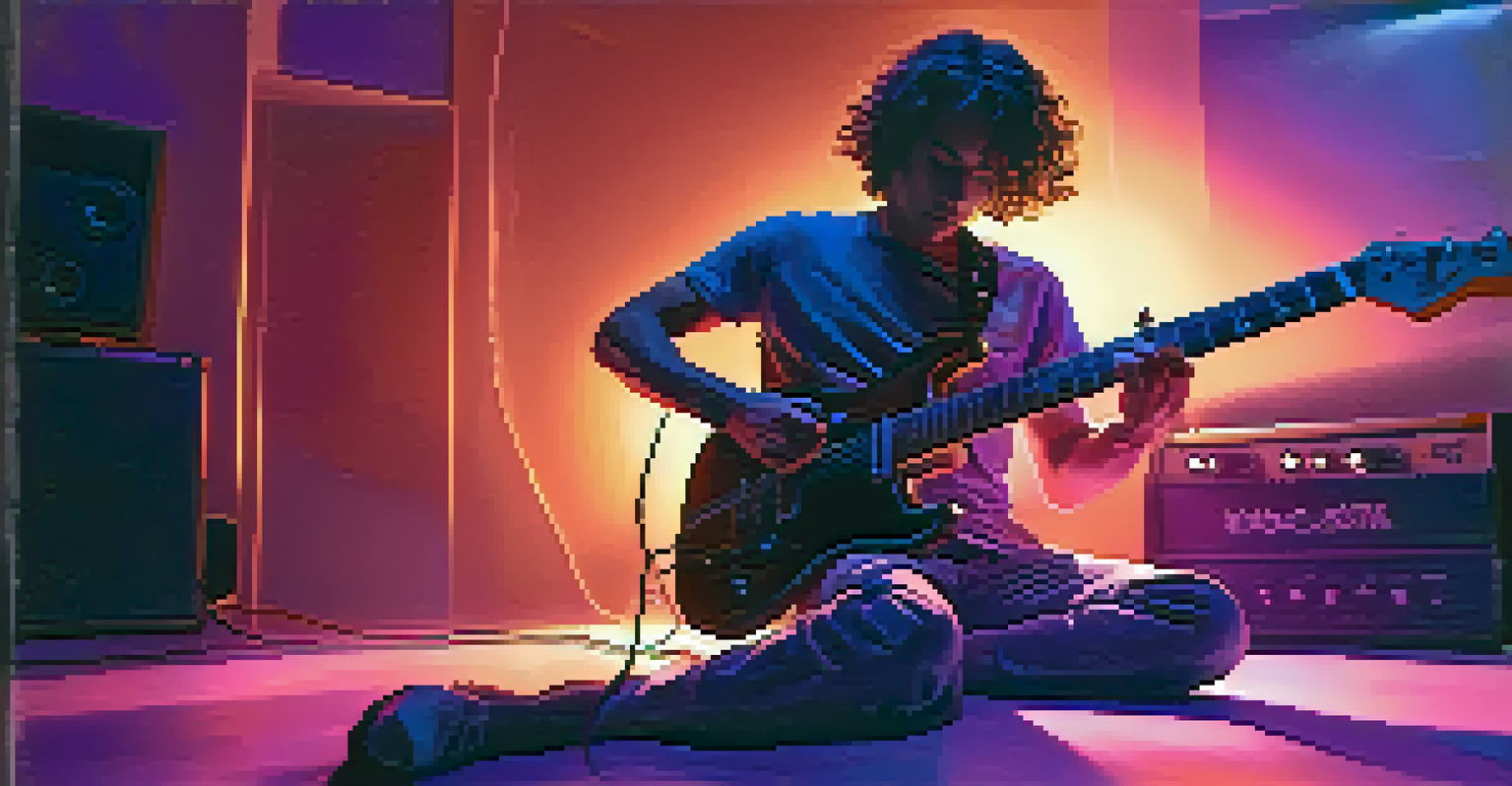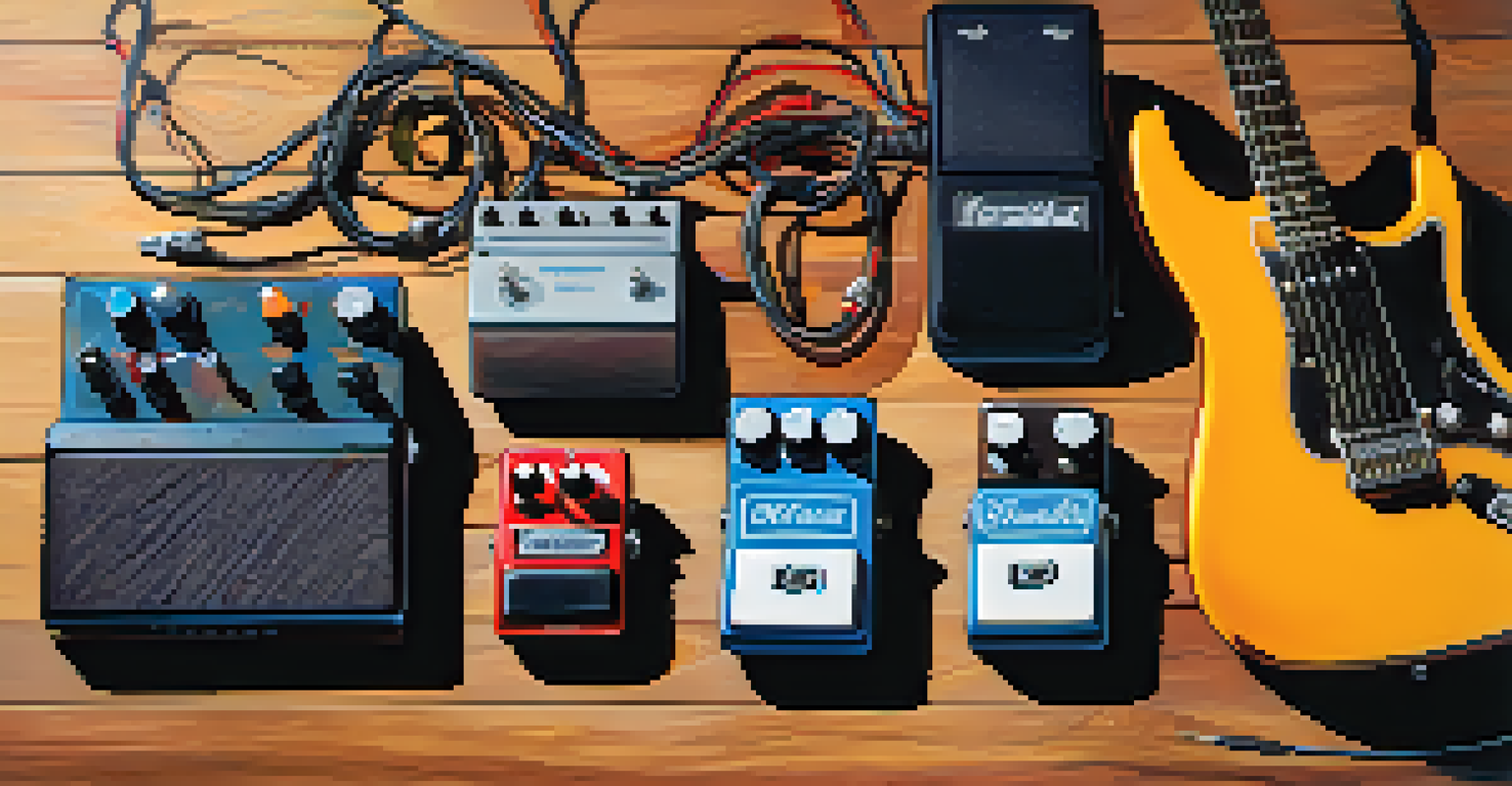Creating Atmosphere: Using Effects Pedals in Your Songwriting

Understanding Effects Pedals and Their Role
Effects pedals are devices that modify the sound of your instrument, adding depth and character to your music. They're not just for guitarists; any musician can benefit from these versatile tools. By using different effects, you can create unique atmospheres that enhance your songwriting process.
Music can change the world because it can change people.
Imagine you're painting a picture; the effects pedals are your colors. Each pedal brings a different hue to your sound palette, whether it's the warmth of a reverb or the sharpness of a distortion. This variety allows you to explore different sonic landscapes and find the right emotional tone for your songs.
The beauty of effects pedals lies in their ability to transform simple melodies into something extraordinary. With the right combination, you can craft soundscapes that resonate with listeners on a deeper level, making your music not just heard, but felt.
Choosing the Right Pedals for Your Style
When picking effects pedals, consider your musical style and the atmosphere you want to create. For instance, if you're into ambient music, reverb and delay pedals can help you build lush, expansive soundscapes. Conversely, if you're writing punk rock, you might lean towards overdrive and distortion to give your songs an edge.

It's essential to experiment with different pedals to see how they interact with your instrument and playing style. Think of it as trying on clothes; some will fit perfectly, while others might not suit you at all. This trial and error process is part of finding your unique sound.
Effects Pedals Enhance Musical Depth
Effects pedals transform your instrument's sound, allowing you to create unique atmospheres that elevate your music.
Don't hesitate to combine pedals for even more creative possibilities. Layering effects can lead to unexpected results, allowing you to discover new textures and atmospheres that enhance your songwriting. Remember, the goal is to find what resonates with you and your music.
Creating Atmosphere with Reverb and Delay
Reverb and delay are two of the most powerful effects when it comes to creating atmosphere. Reverb simulates the natural echo of sound in different environments, making your music feel more spacious and immersive. It can transform a simple chord progression into a lush backdrop that envelops the listener.
The best music is essentially there to provide you something to face the world with.
Delay, on the other hand, repeats the sound at intervals, adding depth and complexity to your music. By adjusting the timing and feedback, you can create everything from subtle echoes to rhythmic patterns that complement your melodies. This layering can evoke emotions and transport listeners to different places.
When used together, reverb and delay can turn a straightforward riff into a captivating soundscape. Imagine strumming a single chord while the reverb cascades and the delay echoes, creating a sense of vastness. This atmospheric foundation can inspire new lyrical ideas, enhancing your overall songwriting experience.
Experimenting with Modulation Effects
Modulation effects like chorus, flanger, and phaser add movement and depth to your sound. They can make your music feel more dynamic and alive, allowing you to explore different emotional landscapes. For example, a chorus pedal can give your guitar a rich, fuller sound, making it stand out in a mix.
Think of modulation effects as the gentle waves in a calm sea; they create a sense of flow and movement in your music. By incorporating these effects, you can transition smoothly between different sections of your song, enhancing the overall listening experience.
Experimentation is Key to Sound
Trying out different pedals and layering effects encourages creativity, helping you discover a sound that resonates with your musical style.
Don't shy away from using modulation effects liberally. Layer them with other effects to create unique sounds that inspire your songwriting. The key is to have fun and see where these effects can take your music.
Using Distortion and Overdrive for Emotional Impact
Distortion and overdrive are often associated with rock music, but they can also convey powerful emotions in any genre. These effects can add grit and intensity to your sound, making your music feel raw and authentic. A well-placed distorted guitar riff can evoke feelings of anger or passion, instantly connecting with listeners.
Think of distortion as the dramatic flair in your songwriting toolbox. It can turn a simple melody into something explosive, capturing the listener's attention. By experimenting with different levels of gain and tone, you can find the perfect balance that fits your artistic vision.
Incorporating distortion or overdrive can also serve as a narrative tool in your songwriting. For instance, a clean verse that transitions into a distorted chorus can symbolize an emotional shift, enhancing the storytelling aspect of your music.
Layering Effects for Unique Soundscapes
Layering effects is like building a complex dish; each ingredient adds its flavor to the final product. When you combine different effects, you can create unique soundscapes that can captivate your audience. For example, pairing a delay with a reverb can enhance the sense of space in your music.
Experimentation is key when layering effects. Start with a base sound and gradually add different pedals, listening for how they interact. This process can lead to unexpected and beautiful results, sparking new ideas during your songwriting sessions.
Incorporate Effects into Workflow
Integrating effects pedals into your songwriting process fosters spontaneity and can inspire fresh melodic ideas.
Remember, the goal is to create an atmosphere that reflects your emotions and storytelling. Layers can add depth, complexity, and richness, making your song feel more complete and engaging for your listeners.
Incorporating Effects Pedals into Your Workflow
Integrating effects pedals into your songwriting workflow can elevate your creative process. Start by setting up your pedals in a way that feels intuitive, making it easy to experiment while you write. Having them within reach encourages spontaneity, allowing you to capture those fleeting moments of inspiration.
Consider using a looper pedal to build layers in real-time. This can help you hear how different effects work together and inspire new melodic ideas. Looping allows you to focus on one part while experimenting with effects, creating a collaborative environment between your playing and the sound of your pedals.

Lastly, take notes on what works for you. As you discover which effects inspire your songwriting, jot down key settings or combinations. This practice can help you develop a signature sound that reflects your artistic identity, making your songwriting journey even more fulfilling.